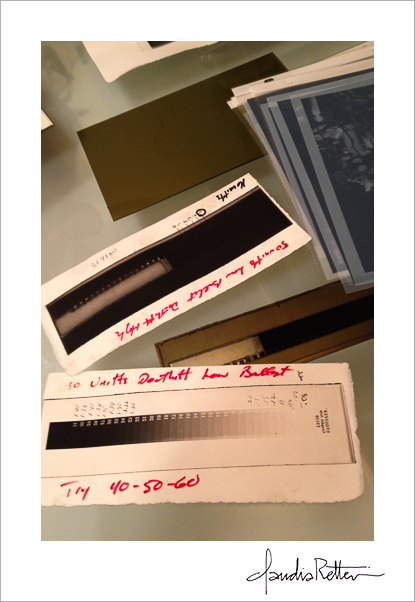Two summers ago I spent a magical week learning the art of photogravure at Renaissance Press in New Hampshire. Set on a riverbank next to a covered bridge, the studio is basically a renovated barn complete with original wood beam ceilings and 12-inch pine floorboards. The weather was perfect the whole time, and it was the kind of workshop where we students raided owner/instructor Paul Taylor’s garden for lunchtime salads and took our breaks on the deck overlooking the water. Bliss!
I hadn’t printed any black and white photographs in many years. It’s taken me a while to figure out why, as I used to be a prolific silver gelatin printer. I think it’s a combination of adding digital cameras to my bag and also wanting to move away from silver gelatin, but not knowing where to go next. I’m an old-school girl too: I love the physical act of creating artwork, not just watching prints roll out of an Epson. I have always loooved paper and ink, getting my hands dirty. Making.
When I learned about gravure, I was so intrigued. The process involves exposing a sensitized metal plate to light, which etches the image into the surface. The plate is then worked with ink and run through a press, transferring the image to paper. In its original form, gravure involves several chemical baths to sensitize copper plates. It's kinda finicky, expensive, and not very environmentally friendly. Buuuut... there are now aluminum plates that are pre-sensitized with an environmentally friendly coating that greatly simplifies the process. It’s interesting because while technically it is a gravure process, there’s a bit of a back-and-forth about what the “new” version is called. Photopolymer gravure? Solar plate etching? Polymer plate etching?
At Renaissance, we learned some pretty technical stuff to get a good plate (including photoshopping, dedicated black & white transparency printing, step tablet tests, etc.).
It was hard-core, but the results were consistent and beautiful.
My problem was what to do when I got back home and didn’t have all this equipment. I wound up letting the whole idea go as I was working on the Flying Adventures book again.
Last month, though, Anne Cushman of Phoenix Rising, Columbus’s printmaking co-op, was offering a solarplate etching workshop and I thought it would be a good re-introduction to the basics of the process. I loved it! Such a great location too: a bright, big-windowed loft space downtown.
AND there’s a great cafe in the building! Hello!
The whole place smelled like inks and art, which was inspiring in and of itself. They even kept the sign from their old location. Nice.
It was amazing how much I’d forgotten, but also how much I remembered, and what I learned at Phoenix was a simplified version of what I learned in New Hampshire. We had our transparencies made at Staples (doesn't get any simpler than that!) and exposed them in a homemade UV lightbox. Anne said you could even just expose the plates in the sun if you wanted. I really liked that idea... something so elemental about it: The sun made this! Unfortunately it was cold and cloudy. No matter.
I brought one of my winter images to work with, as it’s from the series I am hoping to print as gravures. Something about the hand-worked quality that seems to fit the moodiness of my winter scenes. Like you’re brushing snow off a window to reveal a landscape. Only it's ink. I think gravure is the perfect medium for that aesthetic.
I was happy with my finished prints. They were less “perfect” than the ones I made at Renaissance, but I think that’s what I liked about them. They looked less like photographs and more like sketches.. I don’t know how that quality will manifest in the other, more tonal, prints of my series, but I am looking forward to finding out. I can't wait to try different inks and papers, and to experiment with printing my own transparencies using some of the techniques I learned at Renaissance.
Most of all, I am happy to have found a place that will give me an art-home. I have a studio at my house which I love, but every now and then it would be nice to go OUT and work in a communal space. Have conversations with other artists working on their own projects.
I don’t want to lose my black and white work in all the effort I’ve been putting into the Flying Adventures book, and I think that joining the community at Phoenix will be the perfect way to keep it up, try some new things, and meet wonderful people along the way. Thank you, Anne & Phoenix Rising... Hello again, printmaking!



















